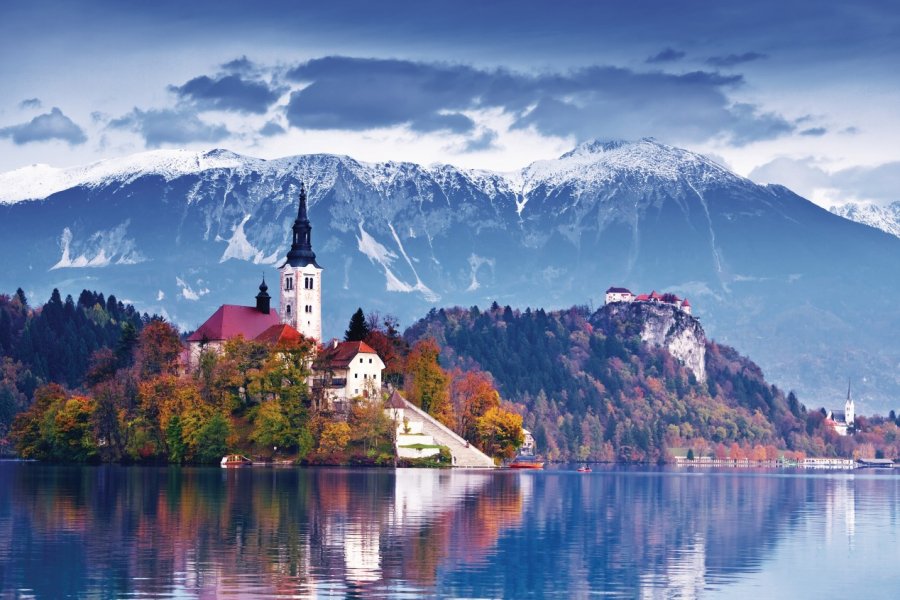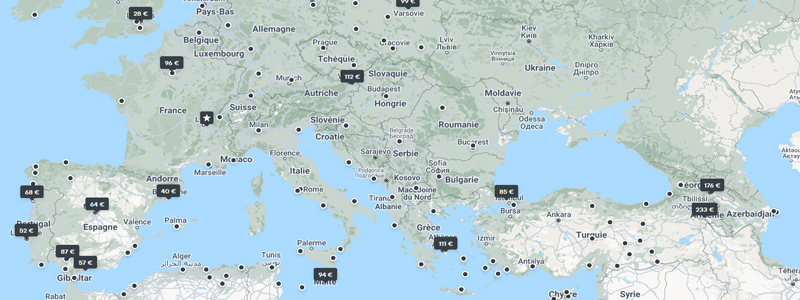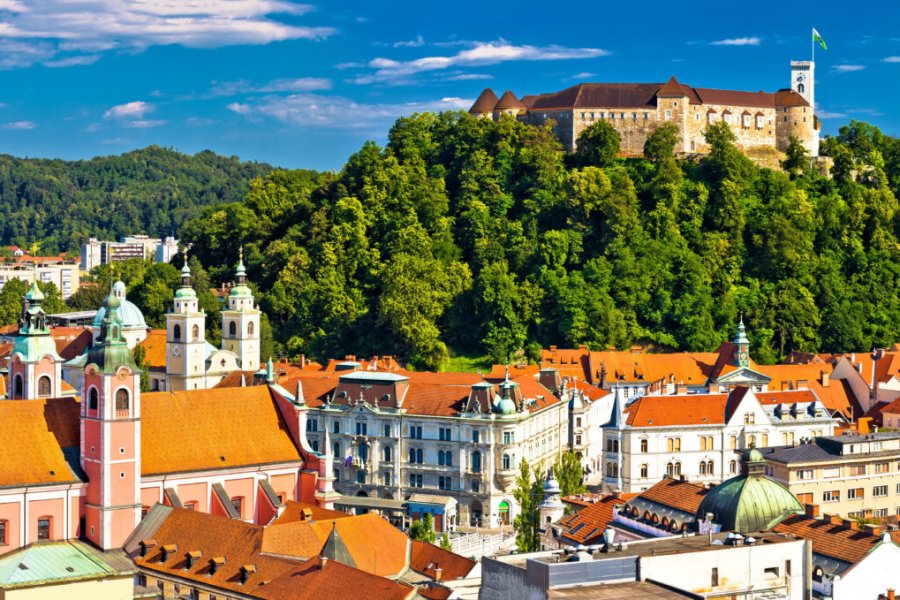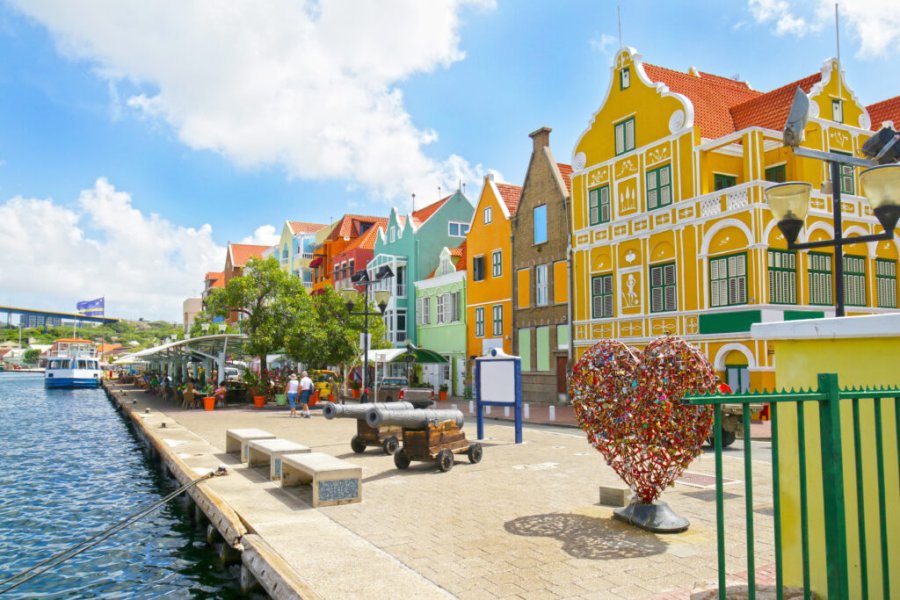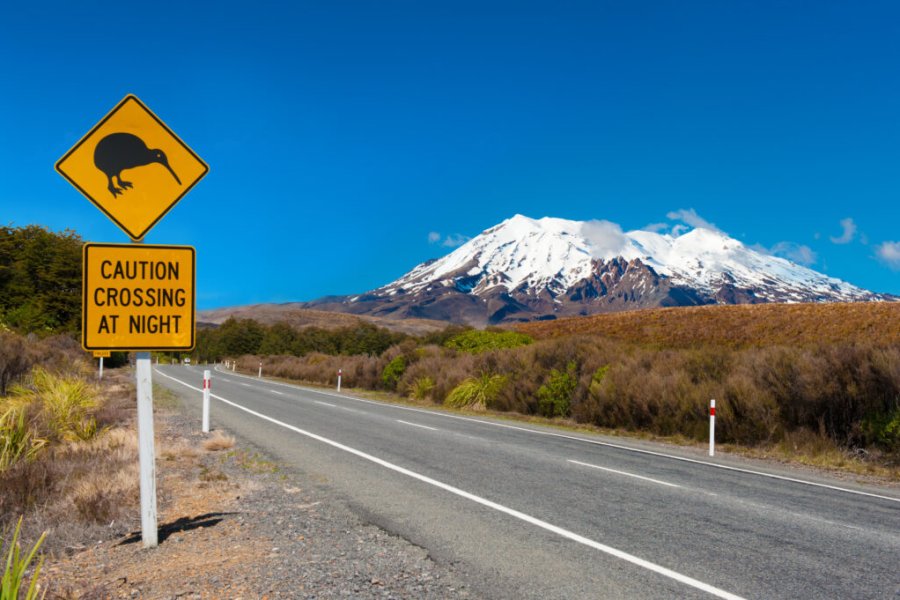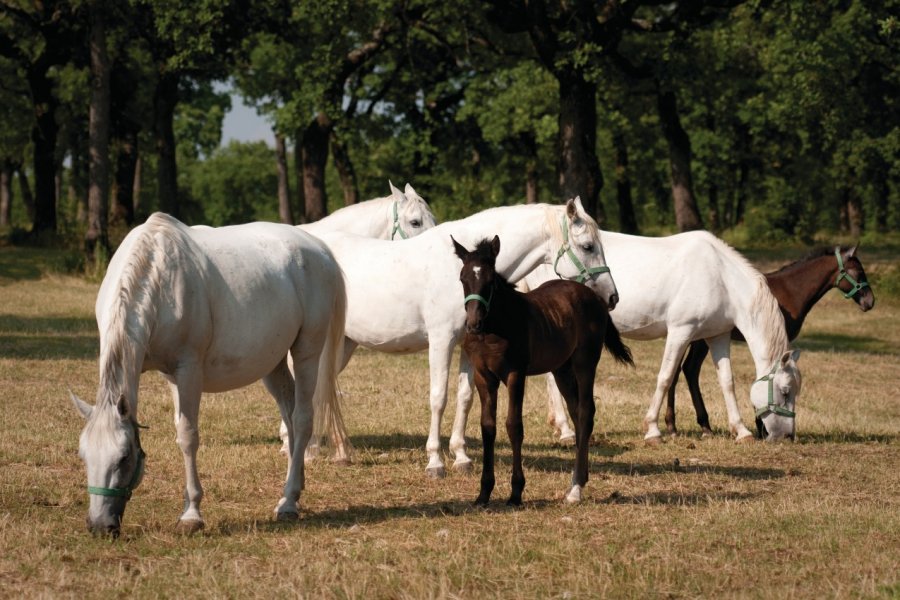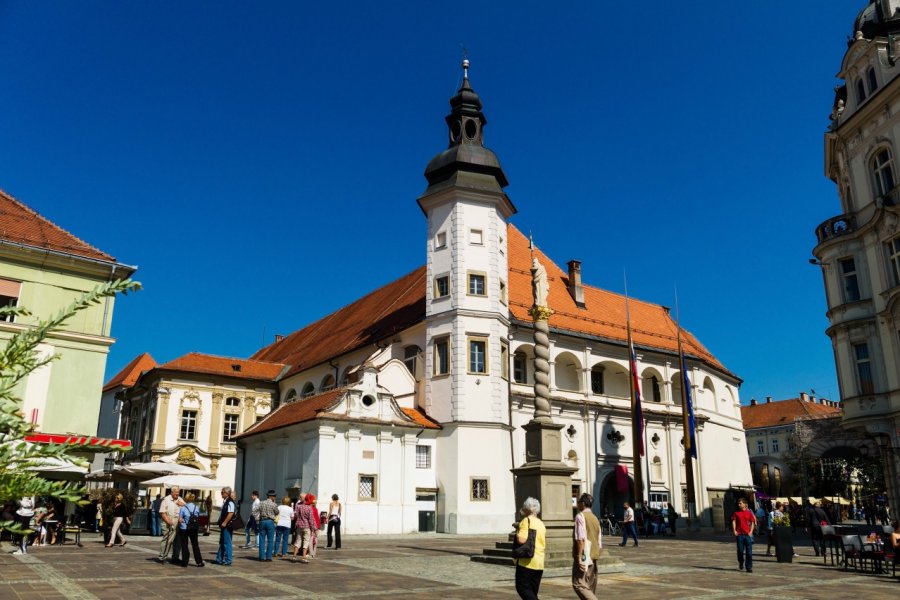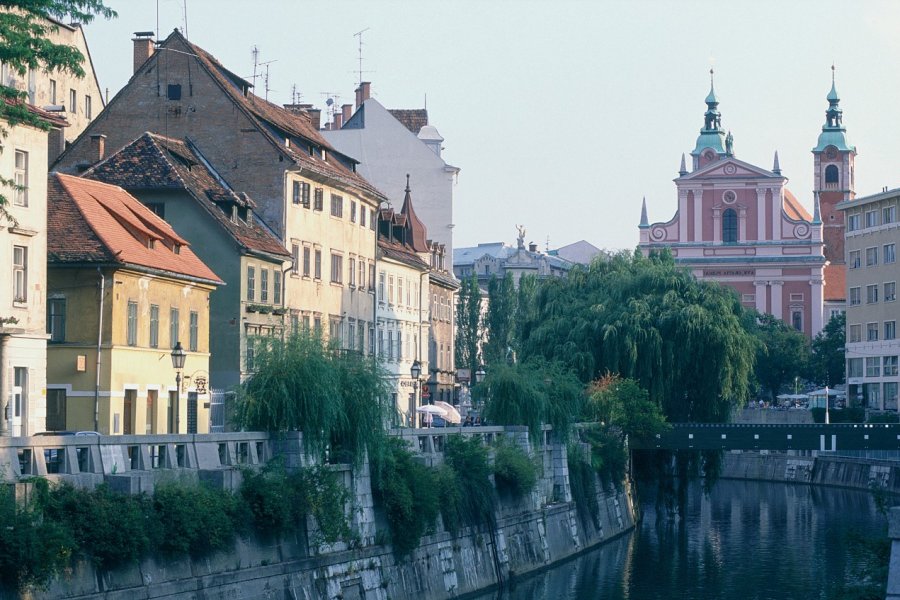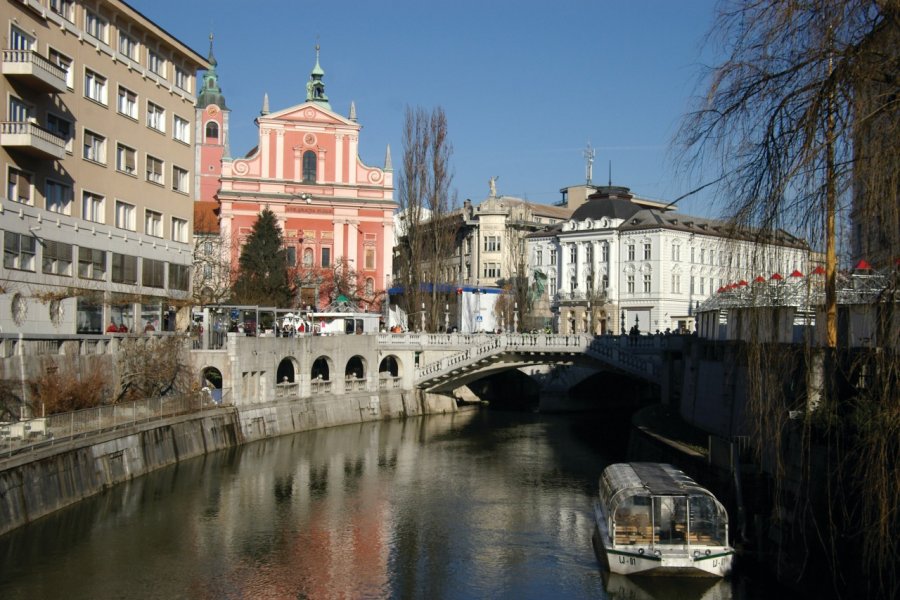Travel guide Slovenia
As the "Green Jewel of Europe", the young Slovenian Republic has come a long way since the break-up of the Yugoslav puzzle in 1991. Slovenia has been a member of the European Union since 2004 and of the euro zone since 2007. Slovenia also presided over the EU in the first half of 2008. Despite this attraction to the West - Slovenians often speak English, German and Italian - the country cultivates a certain pride in its Slavic origins and traditions, and sometimes even a nostalgia for its communist past. In addition to exploring an exciting history and culture, Slovenia's tourist guide offers readers trails to navigate in the heart of this little-known little country, nestled between high snow-covered peaks, Mediterranean beaches and dense Eastern European forests. We will discover the hectic and enchanting capital Ljubljana before going canoeing on the glacial lake of Bled or sinking into the galleries of the Postojna cave, the largest in Europe. The Adriatic coast will remind you of Venice, while to the northeast stretch the gentle slopes of the Pohorje, perfect for strolling. As they approach the Croatian border, the forested areas gain ground, home to bears, wolves and deer. A mosaic destination, Slovenia collects the cultural influences of its neighbours while maintaining its own identity and warmth without being expansive. It is as diverse as its geography, offering the traveller beautiful experiences in a splendid and preserved natural setting, including the benefits of its thermal waters. Dobrodošli v Sloveniji!
What to see, what to do Slovenia?
-
Book an activity
-
Customized travel
- The most beautiful cities Slovenia
When to go Slovenia ?
When to go to Slovenia? Generally speaking, we can say that it is a year-round destination for everyone. The thermal baths, which the country is partly known for, are open all year round and there will always be one in the area where you are. The snow-covered mountains will be particularly welcoming in winter (from November to the end of March) but also interesting in summer as many activities are possible there. The green valleys will be more suitable for walks in spring, when nature wakes up, or for its autumn colors. There is no particular season for the cities, which are quite lively, especially if you are there at the time of cultural events. However, May is perhaps the best time to go to Slovenia: there are plenty of things to do because you can ski in the mountains in the morning and swim in the Adriatic Sea in the afternoon while having a lunch break at the famous Lipica stud. When to go to Slovenia, you ask? Vineyards, caves, karst, forests, streams, waterfalls, architectural heritage, crystal clear waters, adventures, gastronomy... there is something for everyone at any time, and this is undoubtedly the peculiarity of the country.
Suggested addresses Slovenia
Travel Slovenia
-
Find a hotel
-
Car Rental
-
-5% on travel insurance-15% off travel insurance
-
Find a local agency
Slovenia is a country on a human scale: it is quite possible to visit its most famous sites during a one-week stay. Nevertheless, the ideal would be to devote two whole weeks to this destination in order to be able to explore it in depth. You will be immersed in its nuances and the plurality of influences emanating from its different historical regions. Our classic holiday ideas do not pretend to be perfect itineraries, but rather a collection of suggestions based on our own travel impressions. The same applies to our theme trips. As small as it may be, this country is full of a variety of exceptional landscapes and points of interest. Active, urban, thermal, wine-growing routes: you'll be spoilt for choice! Whatever the season you choose to discover Slovenia, you will be seduced by it in all circumstances!
Find unique Stay Offers with our Partners
How to go Slovenia
How to go alone
Average price of a flight from France: between 230 and 500 € in summer and between 180 and 400 € in low season. Please note that the price variation depends on the airline used but, above all, on the reservation period(same for the accommodation). Low cost airlines are options that should not be overlooked: you can fly to Slovenia from Beauvais and land in Venice - for a price that can go down to 50 € per person per round trip - and then reach Slovenia by bus.
How to go on a tour
Since the territory is so different from one part of the country to another, there are many possible activities that can motivate a thematic trip: winter sports, thermalism, gastronomy, national parks, culture, etc. There are very competent travel agencies specialized in organizing trips to Slovenia and this part of Europe. The proposed tours can range from a long weekend to two full weeks. It's up to you!
How to get around
In Slovenia, the road infrastructure is very well developed and the national bus network is well oiled. You can get to any part of the country by bus, even if it is sometimes slow, as there are many stops. The vehicles are nevertheless recent and comfortable. The other option is to drive your own car, if you decide to go to Slovenia on your own, or to rent a car for a fair price. In Ljubljana, you can get around on foot, by bus or by cab.
Featured articles Slovenia
Discover Slovenia
Exploring Slovenia means becoming aware that nature sometimes does things well. It means discovering an incredible biodiversity, a sometimes capricious but unpredictable climate, a diverse geography between mountains, coastline, forests, not forgetting the famous Karst. It is also about getting to know a complex history made up of contradictory influences that led to the recent full independence of a people already thousands of years old. It is a better understanding of the political and economic issues at stake for a young nation seeking to make its voice heard on the European stage. Slovenia's identity is both fragile and solidly anchored, marked by a centuries-old language, typical landscapes and tenacious craft traditions that delight visitors: Idrija lace, Piran salt, Karst ham, quality wine-growing, colourful carnivals..
Pictures and images Slovenia
The 12 keywords Slovenia
1. #Apiculture
Due to its high density of conifers and deciduous trees, Slovenia is a small paradise for bees, especially Carniola bees. Beekeeping is part of the country's tradition, so leaders have successfully campaigned for the establishment of a World Bee Day under the aegis of the United Nations.
2. #Bezeg
Elderflower and its fruit are found everywhere in Slovenia, flavoring drinks and desserts in restaurants and bars. During the summer months, around May-June, Slovenians set off in search of elderflowers, collecting them and transforming them into homemade syrup that quenches their thirst all year round.
3. #Dialects

From one end of Slovenia to the other, over fifty dialects are still spoken! What's even more astonishing is that Slovenes find it hard to understand each other from one region to the next when they use them... Thus, we find derivatives of Serbo-Croatian in the south, Friulian and Italian in the west, German in the north and Hungarian in the east.
4. #Forest
Who said there weren't any large tracts of forest left in Europe? Around 60% of Slovenia is covered in forest. Some, even in the Pohorje massif, are primary or virgin forests, meaning that man has never intervened. An astonishing 25% of Slovenians own a forest.
5. #Klopotec

Wooden rattles used as windmills, their role is to scare birds away from the vineyards. According to local legend, they also sweeten the grapes. They can be found all over France. Installed in summer, they are dismantled after the grape harvest on Saint-Martin's Day, November 11.
6. #Kozolec
The Slovenian farmer is an exceptional builder-architect. Indeed, kozolec are unique hay dryers. You'll often see these wooden constructions, consisting of a vertical panel with a small roof topped by horizontally arranged crossbeams. They are a Unesco World Heritage site.
7. #Mountain

Slovenia is a very rugged country. Situated on the borders of the Alps and the Balkans, it is a culturally mountainous land with three main massifs, all located in the northern half of the country: the Julian Alps with the famous Mount Triglav, the Karavanke and the Kamnik Alps. A white enchantment of lakes and waterfalls.
8. #Bear
Their promised land! There are over 700 of them in the region, where they pose far fewer problems than in France, thanks to the size of the forest, which makes for a more peaceful cohabitation. Measures have also been taken to prevent risks to the herds. This is the case in the Pyrenees.
9. #Outdoor

The country's geography presents itself as an exceptional playground for all outdoor sports enthusiasts. You can ski in the morning in the Julian Alps and windsurf on the Adriatic Sea in the afternoon. From mountain biking to rafting, hiking or paragliding, Slovenia is full of exceptional places to visit.
10. #Potica
It's a rolled walnut cake that's usually served as a dessert, but can also be used to satisfy the munchies of the day. More often featured at local festivals than in restaurants, this "national monument" is a must-taste. Of course, the best potica can be found on tourist farms.
11. #Ski
Certainly the country's national sport, with all its variants such as ski jumping. The Planica ski jumps are one of the highlights of this discipline and a real national pride. The slopes at Kranjska Gora and Maribor Pohorje are among the best on the Old Continent, attracting major competitions.
12. #Zelena
Slovenia has chosen to promote a green economy(zelena). This ecological commitment is based on tourism, which boasts innovative labels, on a pioneering approach to waste sorting taught to children from elementary school onwards, and on institutional support for sustainable alternatives to the all-car trap.
You are from here, if...
Your heart is more in Western Europe than in the Balkans, but you still have positive memories of the Yugoslav adventure.
Your attachment to nature and its preservation is essential to you, and you're an ecologist without really knowing it.
You've already taken part in one of the country's emblematic carnivals.
You're a polyglot with a good command of English and German.
You want to shine in society with your new car.
You 're an aficionado of sport in all its forms: hiking, paddling, winter sports, extreme sports, etc.
You'll be enthroned on the terrace whatever the weather, thanks to the essential help of blankets and outdoor heaters.
Your family isa major part of your life, and you often take refuge with them on weekends.
Your preferredmeans of transport for short distances is the bicycle.
You know how to sort waste to perfection.

